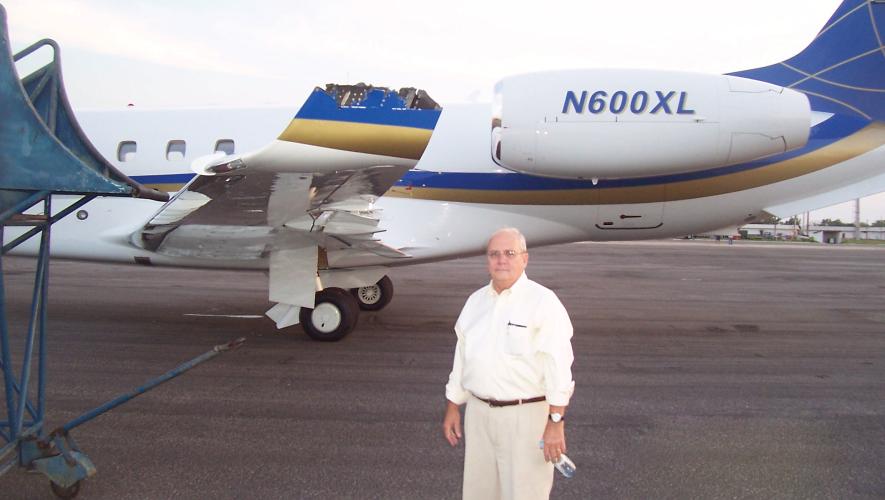Aviation safety and human factors practitioners around the globe are perplexed by one question: why don’t pilots go around from an unstable approach? As with most complex issues, there are no easy answers.
Clearly, a go-around from an unstable approach is recognized as proven risk mitigation to reduce the number approach and landing incidents and accidents, but the compliance rate from pilots is close to nil.
Currently, there are two schools of thought on this topic—academic and practical. Academics suggest that, during an unstable approach, pilots are vulnerable to a confluence of psychological and psychosocial forces far too great for the mind to overcome. Meanwhile, those with a more practical view might argue that “out on the line” there is a fine line between complacency and complicity when it comes to non-compliance.
I think it’s a combination of the two—a mental “mashup”—where elements of each theory hold some merit. Regardless, this is some heady stuff.
Over the past decade, there has been a significant amount of research on the topic of unstable approaches and go-arounds. According to a Flight Safety Foundation (FSF) study that looked at nearly two decades of data, unstable approaches occur on 3.5 to 4 percent of all flights, but only 3 percent of these go around. In other words, flight crews fail to go around in 97 percent of all unstable approaches.
From this study, FSF and the Presage Group focused on situational awareness as the basis for pilots to effectively perform the “cognitive calculus” required to fly a stable approach, recognize an unstable approach, and assess when a go-around is required. This foundation is built on the FSF/Presage Group’s dynamic situational awareness model (DSAM) and its nine constructs.
As described, “The pilots’ very first psychological or cognitive act is being aware of their environment, in all of its facets, and it is this awareness that shapes and molds subsequent perceptions of operational risks and threats, and of the manageability of those risks and threats. These perceptions and judgments, in turn, inform decision making around risk appetite and compliance.”
In the FSF/Presage Group’s DSAM, each of the nine constructs is unique and interrelated. Using the analogy of the dimmer on a light switch, if one of the constructs is affected, then all of the others are also affected. As this theory progresses, a pilot or crew flying an unstable approach and continuing to land, without performing a go-around, has their situational awareness “dimmed.” But those who execute a go-around from an unstable approach is considered “bright” in terms of situational awareness.
One finding of the FSF/Presage Group study related to operational complexity and the decision making involved with unstable approaches. In general, this study made a direct correlation with improved flight crew performance with an increase in operational complexity (i.e. environment and approach type) and vice versa.
Case in point, this study identified an increase in unstable approaches and a decrease in go-arounds in visual meteorological conditions. The study concluded, “The fact that these environmental factors are less associated with unstable approaches is consistent with the notion of the psychological seduction of fair-weather flying.
“Pristine flight conditions invite a greater tolerance for the belief that the absence of complex environmental factors equates with little or no risk to be managed, and suggest to the unstable approach pilot that on one hand, there is a low probability of the aircraft becoming unstable, and on the other hand, should it become unstable, the environmental conditions nonetheless lend themselves to ‘managing’ the instability correctly and landing uneventfully. The processes that lead to these seductive assumptions, however, require the active numbing or passive tuning out of the nine constructs.”
“Failure To Switch Tasks and Cognitive Lockup” by Amit Singh is a fantastic study on the failure to go around from unstable approaches that highlights cognitive lockup, task switching, and the framing effect. This study further delves into the frailties of the human mind as it relates to the ability to switch from one task to the next and prioritizing one over another.
A great example of task switching and the framing effect is the go/no-go decision during a takeoff in a multi-engine aircraft. In this case, the go/no-go decision is framed with a positive outcome if there is a malfunction at a low speed or before V1—the takeoff decision speed. Flight crews, depending on the speed and malfunction, are able to use “cognitive calculus” to determine whether or not to reject a takeoff or continue.
Unlike the takeoff decision, it is much more difficult to switch tasks during the approach and landing phase of flight. One of the greatest influences is that as flight nears completion, the internal pressure to complete that task increases. In other words, 95 percent of the flight might be complete, and another trip around the traffic pattern or diverting to an alternate is a barrier to completing the task or is framed as a negative.
For the professional pilot, training profiles in the simulator are designed to help a crew avoid cognitive lockup by encouraging crews to be more resilient by prioritizing and switching between competing tasks. This same mindset needs to be promoted during the approach and landing phase by actively deciding whether to go around or land—a “land/no-land” decision.
Operators are encouraged to follow the recommendations of the FSF/Presage Group study to further promote situational awareness, optimize stable approach definitions, and minimize the subjectivity of unstable approach/go-around decision-making—for example, employ “active” stable/unstable callouts.
Pilot, safety expert, consultant, and aviation journalist Stuart “Kipp” Lau writes about flight safety and airmanship for AIN. He can be reached by email.







